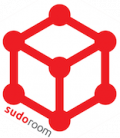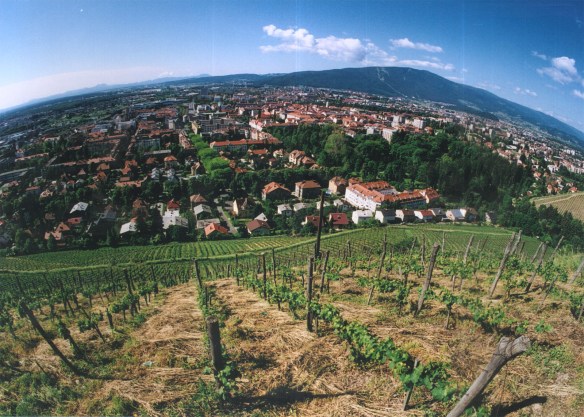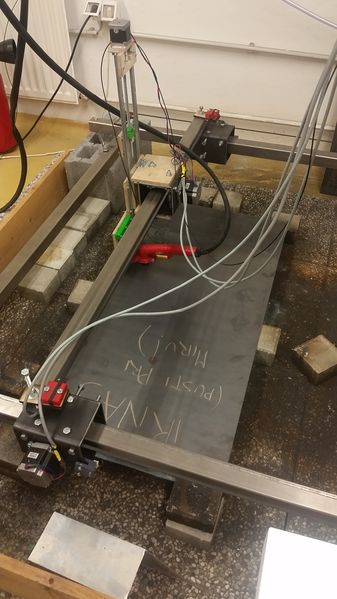On December 2nd, as soon as the purchase of the Omni Commons was finalized (!!!), I packed up my car and took off for the Standing Rock Sioux reservation (located about 1600 miles northwest) with a comrade to join the fight against the Dakota Access Pipeline. Over the previous two months, I’d been looped into the Tech/Comms team on the ground via another comrade, Lisha Sterling from Geeks Without Bounds, and had been advising on building out a local area or mesh network to help with connectivity and communications issues on the ground.
We arrived during one of the more tumultuous times at camp, as the population had spiked to over 12,000 people – many of them hugely unprepared and underequipped for the arctic conditions of North Dakota in December. It was an intense experience personally for many in our community – halfway through our trek across the country, friends and relatives reached out with horrific news: over 30 people, most of them young artists and activists embedded in the social fabric of our lives in Oakland, had perished in the tragic Ghostship warehouse fire that weekend.
So we arrived, shaken and heartbroken and more than a little sick of each other’s company to boot. The final miles of our journey into camp were a slow crawl behind hundreds upon others who’d come in solidarity – but just as many hundreds of vehicles headed out of camp. Apparently, the judge had denied the easement that would enable DAPL to continue constructing the pipeline that month, and approximately half the camp concluded this was a victory. We arrived to a bewildering scene: reuniting with brokenhearted friends from Oakland, firework celebrations and partying over a perceived victory we knew was short-sighted, and the first dangerously-low temperature dip of the season: -10°F (-23°C). Over 30 people that night were reported by Medical as hypothermic.
I was so incredibly grateful when Lisha greeted me with news that the Tech Tent had just been outfitted with a stovepipe, and that bunkbed cots were on the way. After spending my first day getting oriented and making the Tech Tent habitable, I recorded my first livestream:
That week, given the timing, was largely spent orienting myself, trying to understand what the fuck was going on with continual actual threats as well as false alarms triggered by the State, constantly-shifting internal community power dynamics, and multiple small emergencies daily (such as bringing a generator to a camp whose horse trough had frozen over). Lisha was horrifically sick with a bronchial infection (as were many at camp, thanks to a killer combo of cold, smoke, and stress), and the majority of the tech crew had just left. I found myself faced with one of the more challenging set of circumstances I’ve experienced in my life: rapidly adapting to extreme and unfamiliar conditions whilst balancing the need to listen and deeply understand a sacred space and struggle with the call for active leadership on the technical and communications front.
It was bitterly ironic to be burning wood and propane when we had an abundance of resources for building a sustainable energy grid – then again, these were critical environmental and psychological conditions unlike most anyone has ever known. At times, it was hard to think about anything other than how to warm one’s fingertips. Nevertheless, I was staying in a comparably toasty tent full of solar panels, wind turbines, and radio equipment – hella privileged, I had to admit, as I hauled hay bales generously donated from the back of the Wellbeing Tent to provide a layer of insulation around the Tech Tent. We had a stockpile of much-needed gear, but not much in the way of a crew capable of deploying it. So, I set out to build a crew – focusing first and foremost on power.
As is often the case in communities bound together by a unifying cause in the face of a powerful enemy, it didn’t take long to find the others. By the end of the week, we had a skeleton crew of smart, capable techies making the Tech Tent one of their home bases, had inventoried and tested our equipment, and had begun to deploy power crews to most-needed locations whilst collating a map and a plan for the rest of the camp.
A week or so into my arrival, the main public hotspot (a Ubiquiti NanoStation M5 running on stock firmware with a point-to-point connection to the Wellbeing Tent at the base of Media Hill) disappeared from its semi-prominent location at the dome in what was clearly an act of sabotage:
Luckily, I’d brought a few routers (MyNet N600s) already pre-flashed with the sudomesh firmware. I set one up in the Wellbeing Tent with a direct ethernet cable connection to the directional antenna receiving internets from the hill, and another one inside the dome. With a range of ~100 meters, the two nodes were able to see each other and mesh easily. Both tents now hosted open peoplesopen.net hotspots in addition to the private ssid at the Wellbeing Tent, the password for which was distributed to indigenous leadership as well as the tech and media crews.
A few days later, I met a comrade from Sacred Stone who shared some footage of sabotage they’d uncovered at the other end of camp – a perfect-condition snowplow destroyed by way of removing a critical part; additionally, several power lines and insulated water pipes destroyed. But the sabotage was merely the tip of the iceberg of psychological warfare waged against the Water Protectors – from the fire hoses in sub-zero temperatures to the nonstop, creepy trolling of all of our walkie-talkie channels, there was no possibility of escape from it.
I wasn’t at Standing Rock long – a mere two weeks, buffeted by the Omni building purchase into December and a long-planned trip to Africa with my partner’s family at the end of the month – but I learned more in those two weeks than I can even begin to articulate in this post. The importance of trust (AND paranoia) in liminal spaces of contention, maintaining internal peace in the face of at-times violent chaos, organizing with humans who’ve reached their physical and psychological limits, carrying on and doing what needs to be done when all hope seems lost, and ultimately, finding grounding and humility in serving the indigenous leadership protecting and honoring Maka Ina – Earth Mother.
My final livestream, sounding much hoarser and wearier:






